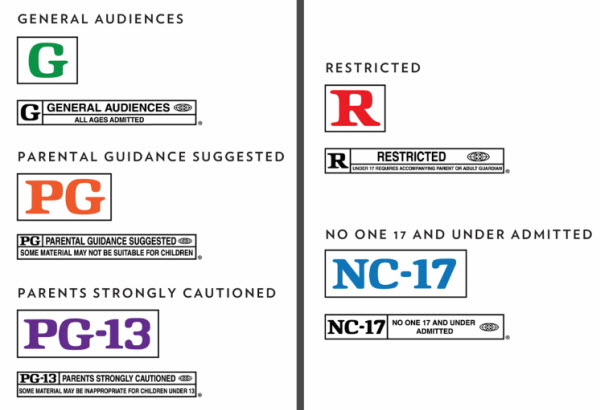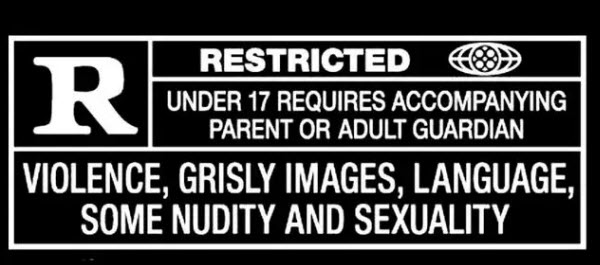Before watching any film, you might wonder whether it’s suitable for family viewing or if children can watch it. This is where the Movie Rating System (MPA) comes into play. This system, used in the United States and its territories, evaluates a film’s suitability for different audiences based on its content and age-appropriate categories. These ratings are assigned by the Motion Picture Association (MPA), formerly known as the Motion Picture Association of America (MPAA) from 1945 until 2019. Although these ratings are advisory and not legally enforced, most theaters refuse to show unrated films. Additionally, this rating system applies exclusively to films; other media like television shows, music, and video games have their own specific rating bodies. The movie rating system is not only essential for viewers but also beneficial for filmmakers, providing insight into the target audience for their work.
How Are Movie Ratings Determined?
Movie ratings are determined by a group of eight to thirteen individuals who are part of the Classification and Rating Administration (CARA), an independent division of the MPA. These members are not part of the film industry and must have children between the ages of five and fifteen when they join. Members are required to leave the group when their children turn twenty-one. They watch the films together and then vote to decide the rating for each movie.
Movie Ratings and Their Explanations
G (General Audience): This rating means the movie is suitable for all ages. A G-rated film does not contain any strong language, sexual content, drug use, or intense violence. Mild violence may be present, but it must be appropriate for children.
PG (Parental Guidance Suggested): This rating suggests that some material in the movie may not be suitable for children. A PG-rated film may include mild violence, language, or suggestive content but not enough to warrant a higher rating.
PG-13 (Parents Strongly Cautioned): This rating indicates that some material may not be suitable for children under 13 years of age. PG-13 movies may contain more explicit violence, stronger language, or suggestive sexual content that does not reach the level requiring an R rating.
R (Restricted): This rating means that the film is not suitable for children under 17 unless accompanied by a parent or guardian. R-rated movies typically contain intense violence, frequent strong language, explicit sexual content, or drug use.
NC-17 (No Children 17 and Under Admitted): This rating indicates that the film contains content unsuitable for children and teenagers under 17. An NC-17 film may include explicit sexual scenes, extreme violence, or other content that is inappropriate for younger audiences.
History of the Movie Rating System

Replacing the Hays Code
In 1966, Jack Valenti, who became the president of the Motion Picture Association of America, deemed the Motion Picture Production Code, which had been in place since 1930 and strictly enforced since 1934, to be outdated and akin to censorship. It often led to conflicts with Hollywood filmmakers, resulting in legal battles over modifications required for films to be suitable for release. This situation prompted Metro-Goldwyn-Mayer, in collaboration with the Motion Picture Association, to introduce a set of advisory ratings that could be applied after a film’s completion. This move was intended as a temporary measure to accommodate the creative freedom of filmmakers and prevent potential government intervention in cinema. By November 1968, the MPAA’s advisory movie rating system was implemented through a collaboration of three organizations serving as oversight and guidance groups: the Motion Picture Association of America (MPAA), the National Association of Theatre Owners (NATO), and the International Film Importers and Distributors of America (IFIDA). The rating system applied to films released for the first time in the United States after that date.
The ratings used from 1968 to 1970 were:
- G: Suggested for General Audiences.
- M: Suggested for Mature Audiences, parental guidance advised.
- R: Restricted, viewers under 16 not admitted unless accompanied by a parent or adult guardian.
- X: No one under 16 admitted.
The initial idea was to have three main ratings, allowing parents to choose any film for their children. However, the National Association of Theatre Owners urged the creation of an adults-only category to avoid legal issues with local jurisdictions. Notably, the “X” rating was not issued by the MPAA.
From M to GP to PG
In 1970, adjustments were made to the ratings, raising the ages for “R” and “X” from 16 to 17. Due to confusion over whether films rated “M” were suitable for children, the “M” rating was renamed “GP” (General Audiences, Parental Guidance Suggested). In 1971, the MPAA added the advisory “Some material not generally suitable for pre-teens,” and on February 11, 1972, the rating was changed from “GP” to “PG.”
The ratings used from 1970 to 1984 were:
- G: General Audiences – All ages admitted.
- GP/PG: Parental Guidance Suggested – All ages admitted, but parental guidance is suggested.
- R: Restricted – Under 17 requires accompanying parent or adult guardian.
- X: No one under 17 admitted.
Introducing PG-13
In the 1980s, complaints about violence and gore in films like “Indiana Jones” and “Gremlins,” both rated PG, led to a re-evaluation of that rating. It became clear that some movies weren’t uniformly suitable for all children, sparking speculation that the PG rating was no longer sufficient. Director Steven Spielberg proposed a new intermediate rating between PG and R. Consequently, the “PG-13” rating was introduced in July 1984, indicating that parents should be cautious if their children are under 13, as some material may not be suitable for younger children. The first film released with this rating was “Red Dawn,” directed by John Milius.
The ratings used from 1984 to 1990 were:
- G: General Audiences – All ages admitted.
- PG: Parental Guidance Suggested – Some material may not be suitable for children.
- PG-13: Parents Strongly Cautioned – Some material may be inappropriate for children under 13.
- R: Restricted – Under 17 requires accompanying parent or adult guardian.
- X: No one under 17 admitted.

Replacing the X Rating with NC-17
In the early years of the movie rating system, films rated “X,” such as “A Clockwork Orange” (1971), were understood to be unsuitable for children but were not pornographic and intended for general audiences. However, pornographic films frequently adopted the “X” rating, and it soon became synonymous with adult content in American culture. As a result, in September 1990, the MPAA introduced the NC-17 rating (No Children Under 17 Admitted). The film “Henry & June,” which had previously been rated “X,” was the first to receive an NC-17 rating. Although NC-17 films had more widespread distribution opportunities than X-rated films, many theaters refused to show them, most entertainment channels wouldn’t advertise them, and several major video outlets declined to stock them. Since September 1990, MPAA ratings have included brief explanations for why each film received an “R” rating, allowing parents to understand the specific content, such as intense violence, strong language, sexual content, or drug use.
The ratings used from 1990 to the present are:
- G: General Audiences – All ages admitted.
- PG: Parental Guidance Suggested – Some material may not be suitable for children.
- PG-13: Parents Strongly Cautioned – Some material may be inappropriate for children under 13.
- R: Restricted – Under 17 requires accompanying parent or adult guardian.
- NC-17: No children under 17 admitted.
In 1996, the minimum age for NC-17 rated films was raised to 18 years.
Elements of Movie Ratings
Violence
Depictions of violence are allowed under all ratings, but they must be appropriate for the different categories. For G-rated films, violence should be minimal, and in PG-rated films, it should not be intense. More severe violence is permitted under the PG-13 rating, but realistic, extreme, or sustained violence generally requires at least an R rating.
Language
Mild profanity may be present in G-rated films, but stronger words are not allowed. Profanity can be more common in PG-rated films, while the use of harsher sexually-derived expletives as an insult typically results in at least a PG-13 rating. If used repeatedly, it usually warrants an R rating.
Substance Use
Depictions of drug use are limited to PG-13 rated films and above. In May 2007, the MPAA announced that depictions of smoking would be considered in film ratings. Anti-smoking advocates have stated that a PG rating would not be suitable for films where characters smoke.
Nudity
Nudity is excluded from G and PG-rated films but is allowed in varying degrees for higher ratings. Brief nudity requires at least a PG-13 rating, while more explicit sexual nudity necessitates an R rating. Since 2006, films have been marked by the MPAA if they contain nudity. In 2018, Joan Graves, head of the MPAA, clarified that nudity in film ratings does not distinguish between male and female but focuses on whether the nudity is partial or explicit.
Sexual Content
The MPAA does not have explicit standards for sexual content, except that sexual scenes are excluded from G-rated films.
